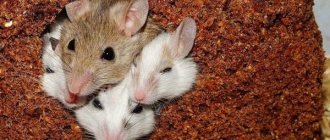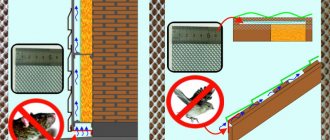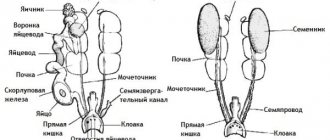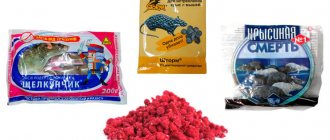Today in stores you can find many chemicals for use in gardens and gardens. With their help, you can effectively combat pest invasions and all kinds of plant diseases. Unfortunately, most of them accumulate in leaves, fruits, and roots, which poses a danger to human health.
Recently, there has been an increase in the number of fans of biological farming, who use only natural methods given by nature on their plots. They are safe for the body, do not accumulate in fruits, and give the necessary results. Birch tar is a natural product that can become an effective assistant for summer residents, which will help get rid of pests and diseases.
Getting rid of wireworm
These worms live in the ground and damage root crops. It is difficult to fight them, as they multiply quickly. Tar will help get rid of pests. To do this, two tablespoons of tar are diluted in 10 liters of water. Before planting potatoes, you need to dip each tuber in this emulsion. The wireworm will be repelled by the smell of tar and will not damage the tubers.
The same solution can be used to treat all holes and rows where you plan to sow root crops using a spray bottle. After this procedure, the number of harmful worms is reduced by half.
Tar protects against rats, voles, mice
To solve this problem, you will need any grain (corn, wheat, barley, oats). Tar is added to it. So that all the grains are covered with it. Place in small piles where mice live. Let the bait sit longer. It can be removed only when the piles do not decrease. This means that there are no more rodents and there is no one to eat the bait.
Fighting aphids and ants
The trunks of fruit trees must be wrapped in bandages soaked in tar. Then pests will not climb onto the branches. Shrubs should be sprayed with a spray bottle. The solution consists of 5 large spoons of tar and 10 liters of water. To protect vegetable crops, you need to pour a little tar on the sawdust. After some time, the mass of sawdust will increase. They need to mulch the surface of the soil under the plants.
Protection against late blight
7 tbsp. spoons of tar and 2 tbsp. spoons of soda are diluted with 10 liters of water. The solution is sprayed on the ground before planting. If signs of disease later appear on the plants, it is recommended to spray the plants with water and diluted tar. After 10 days, the treatment should be repeated. Usually two sprays are enough.
Birch tar is a natural, environmentally friendly product for controlling pests of garden and garden crops. Gardeners are happy to use the substance and treat their plants with it. You can use tar soap together with tar or instead of it.
Getting a predator
Finally, the most famous, oldest and most proven remedy for rats is the domestic predator. It must be a large, strong animal, since rats themselves differ from smaller rodents in both size and endurance. Therefore, not every cat can cope with a rat; it is better to take pity on your pet. Natural enemies of rats are also ferrets, weasels and foxes - some now keep them in the house. And besides, there are some dog breeds that cope with rats better than others: dachshunds and terriers. Fox terriers and bull terriers are considered the best rat catchers.
Video: dogs vs rats
Almost all terriers (even Yorkies) and miniature pinschers are rat catchers; the record holder for catching rats is bull terriers (in terms of speed and duration of work).
Nadia
https://otvet.mail.ru/answer/378686832
As we can see, over many years - and even centuries - of fighting rats, people have invented many different ways to get rid of them even before chemists developed special poisons. Moreover, many of the folk remedies are good because they help both in combating and preventing. Therefore, it definitely makes sense for owners of private houses to take a closer look at them and choose the best for themselves, and the worst for rats.
How to use birch tar in the garden?
Birch tar in the garden will repel a lot of pests and rodents with its smell. It is used not only in the form of a solution or emulsion, but also in other forms:
- Coating.
Clay is mixed with mullein and lime, 40 grams of tar are added, mixed with water until a slurry is obtained, and the trunks of bushes and trees are coated with this. - Tar mulch.
Simply put, it is sawdust soaked in tar solution. Mulch is laid out under trees and in beds.
Birch tar from the mole cricket
Birch tar against mole crickets does not act as a means of destruction, but as a repeller. It is capable of creating unfavorable conditions for the mole crickets to feed and live. The specific aroma of tar upsets the nervous system of insects. If a mole cricket has settled in the soil, it will quickly leave it.
There is no exact recipe for how to carry out the treatment and at what frequency; gardeners experimentally develop their own system. On average, it is proposed to use birch tar in the garden against pests as follows: dilute 100 ml of liquid product with 3 liters of water, you can add 1 tablespoon to a ten-liter bucket of water.
Birch tar from onion fly
The onion fly is one of the most dangerous pests. Because of them, the bulbs rot, wither, and the leaves dry out. If the use of chemicals by the gardener is not recommended, you can use birch tar. There are several recipes for using birch tar against onion flies. If you need to scare away the pest from onion beds, 30 minutes before planting, place the bulbs in a plastic bag, add 1 tablespoon of birch tar and mix for a long time. In practice, this is done with onion sets.
There is another option: water at room temperature is poured into a 1-liter container. Add 1 tablespoon of birch tar and mix. Soak the onion in the solution for 3 hours, first cut off its tails and, if possible, remove the peel. This method is simpler than the previous one, and if there are microbes and viruses in the planting material, they will die.
Birch tar from wireworm
The wireworm destroys not only potatoes, but also other root crops. Even powerful chemicals cannot always destroy it completely. Birch tar allows you to do this without much labor. It is recommended to begin the control process even before planting potatoes. This is a kind of preventative measure.
The method of using birch tar against wireworms is as follows: make a tar solution: pour water into a 10-liter bucket and add a spoonful of tar. The composition is mixed and the tubers are sprayed with it. If the treatment has not been carried out before, you can proceed as follows: the tubers are dipped in a tar solution, only then buried.
Birch tar from the Colorado potato beetle
Experienced gardeners have been using birch tar against the Colorado potato beetle for a long time. A simple type sprayer will not work here; you need to use the old method with a regular broom dipped in a solution. The emulsion must be constantly stirred during spraying to avoid separation.
The application of the solution begins at the stage of emergence of seedlings, the frequency of treatments is every three days. In the rain and before the rain, treatment is not carried out so that the product is not washed off with water. The product does not pose a danger to people and animals; it effectively expels the beetle and does not allow new individuals to colonize.
Birch tar from moles
Birch tar has been used in the garden against moles for many years and does not pose a danger to people. Recipe:
Methods of use
There are no exact rules and instructions on how to use tar in gardens and vegetable gardens. People have long noticed that the aroma of this resin is unsuitable for pests (and not only). Each gardener uses his own proven methods. This can be watering with tar added to the water, spraying with a solution, or placing objects soaked in the composition in the right places.
To keep the product on the leaves and branches longer, it is recommended to add grated soap to the solution.
Watering
Many harmful insects can be driven away by watering the plantings with a solution of birch resin. These include:
Spraying
Spraying is used to expel the Colorado potato beetle:
• The potato field is sprayed with the mixture (1 tablespoon of tar per 10 liters of water) twice - immediately after germination and before budding.
• On eggplants and peppers, spray the stems with the same composition before fruit sets.
Removing codling moth. Despite the fact that there will be difficulties with pollination, this insect can only be fought during flowering, that is, the tree crown is sprayed with a mixture of tar and water (10 g per 10 liters of water).
Gooseberry pest control:
Stone fruits are often the target of attack:
• boiled water - 1 l;
• granulated sugar - 2 tsp;
• soap - 1 tsp. + shower gel - 1 tsp.
All of the listed ingredients should be mixed with water one at a time and shake well again before processing. The success of the treatment depends on complete coverage of the crown.
Traps
Gardeners advise to escape from rodents in somewhat unusual ways. Calling them a trap is probably not very correct. Although, if these compounds get into the pest’s stomach, it is unlikely to benefit it.
The following options are offered:
• Boil millet porridge in water and add 4 tbsp for each kilogram of chilled product. l tar. Next, the “delicacy” is laid out in shallow grooves in the right places and sprinkled with earth.
• Take dry grain (corn, wheat or oats) and mix with pure tar. Just be very careful so that every grain is covered. Next, the product needs to be spread out in pest habitats (in small holes, sprinkled with soil).
The effect of mash lasts up to three months, so you should not remove them just because rodents no longer appear. Can be removed if the amount of mash does not decrease over time. This means there is no one to eat it.
Mole crickets cause a lot of damage to garden crops. They spoil all plants indiscriminately. They work underground and on the surface. Therefore, the methods of dealing with them are combined. As for potatoes and other root crops, you need to treat the planting material with a solution (base) before sowing. Sawdust mixed with baby is also successfully used. They should be scattered over the beds and between the rows.
Counteracting rodents and moles
Winter is a difficult time for any living organism. Wild hares are no exception either. In search of food, they often come to gardens and summer cottages and happily feed on the bark of young trees and shrubs. To escape from them, it is enough to coat the bottom of the trunk (bush branches) to a height of 80–100 cm with a creamy whitewash solution. It is prepared from 1 kg of whitewash, 50 g of tar and 10 kg of mullein.
All owners of summer cottages are familiar with small rodents such as mice. Plantings are especially defenseless against them in winter. Therefore, plantings should be protected from mouse invasion in the fall. After harvesting and seasonal work, you need to scatter wood shavings soaked in birch resin in the root zone of each plant. The solution for this is prepared as usual - 1 tbsp. l. for 10 liters of water.
Another unwanted guest of private gardens is the mole. The same tar will help drive it away. To do this, you need to dilute a third of a glass of any vegetable oil and a glass of tar. Next, soak a rag with this mixture and place it at all entrances of the molehills.
How to make birch tar at home?
Making birch tar at home is possible. To make it, you need to collect the required amount of birch bark and prepare it for use. Birch bark is collected so as not to damage the tree, using cuts in the upper layer of bark. If you need a lot of tar, then you will have to collect a large amount of bark. Birch bark must be fresh; overdried birch bark will not work.
The cooking process itself is as follows:
- The birch bark is rolled up and placed in a metal container (for example, a coffee can), in which a small hole is made. A very fine metal mesh is placed at the bottom of the jar so that after the birch bark is burned, the ash does not fall into the lower container.
- After this, a smaller container is buried in the ground, without holes in the bottom. This is a container to collect the finished tar.
- Place a container with birch bark on top.
- A kind of hearth is fenced off with stones, and the birch bark is set on fire.
- When it burns out, the fire is extinguished and the container buried in the ground is removed. The resulting tar flows from the upper container into the lower one.
Birch tar can be stored indefinitely. It is better to keep it far from food and tightly packed so that the specific smell does not permeate everything around, including things and products. You can use tar on the recommendation of doctors internally or for cosmetic purposes (soap, shampoo additives).
Birch tar has been used in gardens for many years as a repellent, but experts do not recommend combining it with synthetic pesticides and dietary supplements. It can be combined with natural extracts and minerals. This complex is more effective than each substance individually.
Mice are guided in their activities by smell. They find food by smell, identify the enemy, navigate in space, and find a pair for reproduction. The smell attracts rodents or repels them. This property is used against them by a person if he decides to wage war using folk remedies. In addition to smell, mice are also afraid of sound. If you understand all these subtleties, you can get rid of pests in a short period of time and prevent them from returning to their former places. What are mice afraid of?
What is this?
Birch tar is a liquid product of dry distillation of birch bark (the light part of birch bark).
Externally, tar looks like a thick, oily, black liquid with a bluish-greenish or greenish-blue tint in the light and a very specific odor.
Reference. To obtain birch tar, only the upper part of a young tree was taken.
In Rus', this substance was also known as birch bark tar. It contains more than 10,000 components that give birch tar antiseptic, antiparasitic and antimicrobial characteristics. The product, which has a whole range of healing properties , can be easily purchased at any pharmacy.
Unpleasant odor for rodents
What smell mice are afraid of has been determined by people through observation and trial and error. During the tests, it became known that rodents cannot tolerate strong odors. They repel mice with pharmaceutical preparations, plants, essential oils, and flammable liquids.
Singed wool
If mice have settled in the house for a long time and are not going to move out, you can use one effective, not very humane method. Catch a mouse, set the tail on fire, release it. The frightened animal will run into the hole to its relatives. Rodents cannot stand the smell of burning wool. The mouse itself will drive away its relatives.
The smell of a cat's burnt fur repels rodents even more. Trimming your pet's hair slightly will create a nightmare for rodents. If there is no animal in the house, you can set fire to an old woolen product, or a skein of thread, and put it in a hole.
How to scare away mice if there is a cat in the house, even the laziest one, the question should not arise. Cat urine is the best mouse repeller. No one can stand its pungent smell, especially rodents. Also, a cat can eat a mouse if it catches it.
Plants
Plants to repel rodents Some plants not only repel rodents with their smell, but also affect your well-being. Folk remedies for mice can be much more effective than professional ones.
- Sagebrush. The grass gives off a strong odor that mice cannot tolerate. Twigs of a fresh plant are laid out in places where rodents have been seen, in burrows, if the location is known. The result is more effective if the room is smoked with grass. They set fire to wormwood branches and walk around the apartment. Smoke penetrates into the smallest cracks and reaches rodents anywhere. Instead of wormwood, you can use tansy. The effect is similar.
- Peppermint for mice is one of the most effective ways to control rodents. For humans it is a safe and even useful remedy. Pick fresh leaves of the plant and place them around the perimeter of the room. If mice have settled in the apartment, you can create an aura of a persistent minty smell using essential oil. Drop peppermint oil onto a candle and light it. A pleasant aroma will fragrant throughout the room, smell for a long time, and drive mice crazy.
- Grouse bulbs. The root of the flower has an unpleasant onion odor, which causes fear in rodents.
- Blackroot. Affects the nervous system of rodents. The mice hear it several meters away and try to quickly hide. Contact with this plant is fraught with severe mental disorders. The smell follows the pest everywhere, gradually driving it crazy.
- Swamp wild rosemary. Contains toxic oils. After contact with the plant, mice receive a lethal dose. The remaining individuals run away from him wherever their eyes look.
- Chamomile. Pyrethrum is an effective remedy against many pests and is safe for humans. A tincture can be used. According to reviews, the effect is even better.
Useful video
How to get rid of mice with birch tar in the video below:
- Read all comments from the beginning:
- 1
- 2
- 3
- 4
- 5
- 6
- 7
- 8
- 9
- 10
- 11
- 12
- 13
- 14
- →
Discussion in our VKontakte group:
Elena Letnyaya:
They also don’t like stove ash and burnt wool.
Tatyana Arkhipova:
an ordinary mousetrap slams quickly, and even if only the tail slams, the mouse still instantly dies of fear. But what to do with a live mouse from a bottle? Yes, this is an old proven method, but I caught mice this way only once - because what to do with a captive. those frightened beady eyes.
Linda Staff:
If we use music or noise, our neighbors in the dacha will catch us. If we use poison, the mice will bring it to our table; if we frighten with smells, then I will have to go to the city myself. If we catch it in a mousetrap, it will crush the mouse (fairy..) , and often it breaks down. All that remains is not to store seeds or supplies in the winter dacha (then the mice gnaw at everything), to seal all the holes in the walls. And we also put 30x30 cardboards on the floor in each room for the winter, on which we put a ring from special glue (sold) Place a piece of sausage or smoked lard in the middle of the ring and that’s it! We don’t see horror films anymore. In the spring we throw away the cardboard
Elena Letnyaya:
And I have rabbits, sometimes the grain spills out of the feeder. As soon as the rabbits arrived, Larisa immediately showed up, the Rat Death bags are helping so far.
Irina Strelkova:
they say that mice are repelled by the smell of wormwood - place its branches everywhere
Elena the Beautiful Rose:
Against mice I use birch tar, elderberry, mint, green granules in bags (I don’t remember the name). I used rat poison once and for all.










